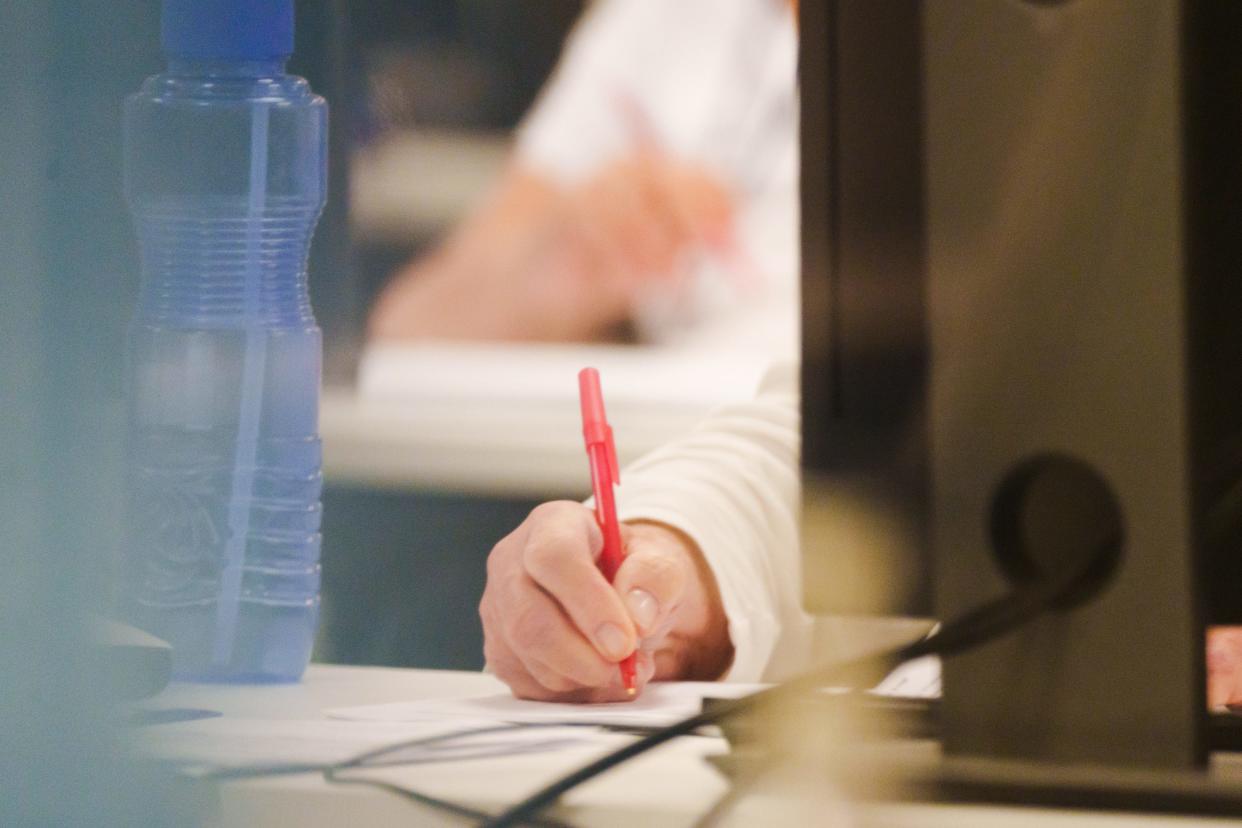How Maricopa County counts votes after polls close – and why some results are slower

Judged by the traditional rubric for election administration, Maricopa County’s August 2022 primary was a major success.
866,924 Maricopa County residents cast a ballot – the most ever in a Maricopa County primary.
We mailed out, on time, 1.4 million accurately printed ballots.
Voters had more voting options than ever before with 210 vote-anywhere voting locations.
Every single voting location opened on time for all 27 days of the voting period.
Lines were almost non-existent until the end of Election Day.
We hosted the most political observers ever – Republicans, Democrats and Libertarians.
We responded to e-mailed voter inquiries in less than 30 minutes on average.
We launched a new website (Elections.Maricopa.Gov) to better inform voters.
We tabulated results accurately and quickly.
On this last point – tabulation – it is a complex process overseen by political party observers and regulated by both Arizona statute and the Election Procedures Manual. Maricopa County accurately and efficiently tabulated the results, but we here aim to better explain the process and its time frame.
We posted 70% of the tally at 8 p.m.
State law allows counties to post results starting at 8 p.m. on Tuesday night. In the August primary, Maricopa County released the results of 601,000 ballots right at 8 p.m. This represented 70% of the eventual tally and included all early ballots received by Maricopa County as of the Sunday before election day.
These early ballots return in sealed and signed envelopes. We first scan the barcode on the envelope to make sure it is a valid envelope, and that the voter has not already cast a ballot. Then, we image the signature on the envelope and compare it with voter’s historic signatures from county elections.
Only after we match the voter’s signature by both a first-level reviewer and a manager do we send the envelope to a bipartisan ballot processing team. The bipartisan team extracts the ballot from the envelope, confirms that it is the right ballot style, makes sure the ballot isn’t damaged, and flattens the ballot for tabulation.
All of this is logged and reconciled at every step.
Never before had Maricopa County had all ballots received by Sunday ready for release at 8 p.m. election night.
What happens after polls close
The next results released are those ballots voted in-person on election day. These voters feed their ballots directly into a mini-tabulator at the voting location. Once polls close and all voters have left the voting location, the breakdown of the site can begin (usually around 7:45 p.m.).
We secure all ballots at the voting location and remove the memory drives from the tabulation devices and put them in tamper-evident, secure packaging. We do not transmit these results from individual locations over the internet. Instead, these memory drives are transported by bipartisan drivers from the 210 voting locations to various receiving sites throughout the county.
Not as successful: Pinal County assesses primary election debacle
At the receiving sites, a new bipartisan team loads the ballots and memory drives from all nearby voting locations into a truck. That truck is escorted by security to the elections tabulation center in downtown Phoenix.
At the tabulation center, the memory devices are validated and loaded into the main results server with political party observers present at every step. Because the main tabulation server cannot connect to any external network, we then put the results onto new memory drives that are carried to computers with secured connections to our website and the Secretary of State’s Office.
Want faster results? Return your early ballot earlier
For the August primary, Maricopa County loaded results throughout the night. We had all results loaded by 12:30 a.m. – the second-fastest in the past 30 years, and the fastest in recent history. That represented an additional 106,000 votes.
At that point – 12:30 a.m. on Wednesday morning – the only remaining ballots to be tabulated were early ballots dropped off in their sealed envelopes on Monday or Tuesday election day, approximately 159,000 ballots. By law, we cannot retrieve early ballots dropped off on election day until after polls close and voters leave.
This is frustrating to many who would like results immediately. But it is perfectly lawful to drop off early ballots on Election Day, and it is the preferred voting method of many Arizonans. However, those ballots must still go through the early ballot process described above, including signature verification. We started that process at 1 a.m. on Wednesday and continued without sleep until Friday.
By Friday, we’d signature verified and tabulated 98.7% of all ballots. That compares favorably with Maricopa County’s past speed, with other Arizona counties, and, yes, with counties in Florida (we get a lot of questions about Florida).
All that remained by the end of the day Friday were special ballots like Braille ballots and ballots that needed to be “cured” – the process by which a voter can confirm a signature originally deemed nonmatching. State law allows voters one week to cure their ballots.
We’re proud of getting results out faster than ordinary, even with the largest primary turnout ever. We will continue to try to speed up the process to the extent allowed by law.
If you want us to have more than 95% of our results posted right at 8 p.m., then please do what we both told our family members to do: return your early mail ballot as soon as possible!
Stephen Richer, a Republican, is Maricopa County recorder. Bill Gates, a Republican, chairs the Maricopa County Board of Supervisors; he represents District 3. On Twitter, @stephen_richer, @billgatesaz.
This article originally appeared on Arizona Republic: How fast (or slow) Maricopa County tabulates votes depends on voters

